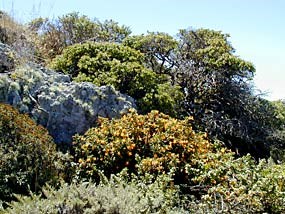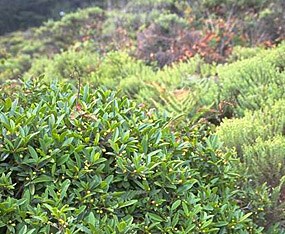
Scrub is the name used for areas of low shrubs common along the Chaparral is a specific type of scrubland that occurs along the California coast. The word chaparral comes from 
NPS Photo Two plants in the snapdragon family provide some of the most showy wildflowers in the scrub, and attract hummingbird to which feed from their tube-shaped orange and red flowers. In wetter areas the pipevine swallowtail butterfly flits its blue wings among the vines that twine between the shrubs. Hillside morning glory, wild cucumber, and giant vetch trail over the shrubs with their light pink blooms. Blackberry, osoberry and twinberrry are a treat for wildlife and humans alike. |
Last updated: February 28, 2015
